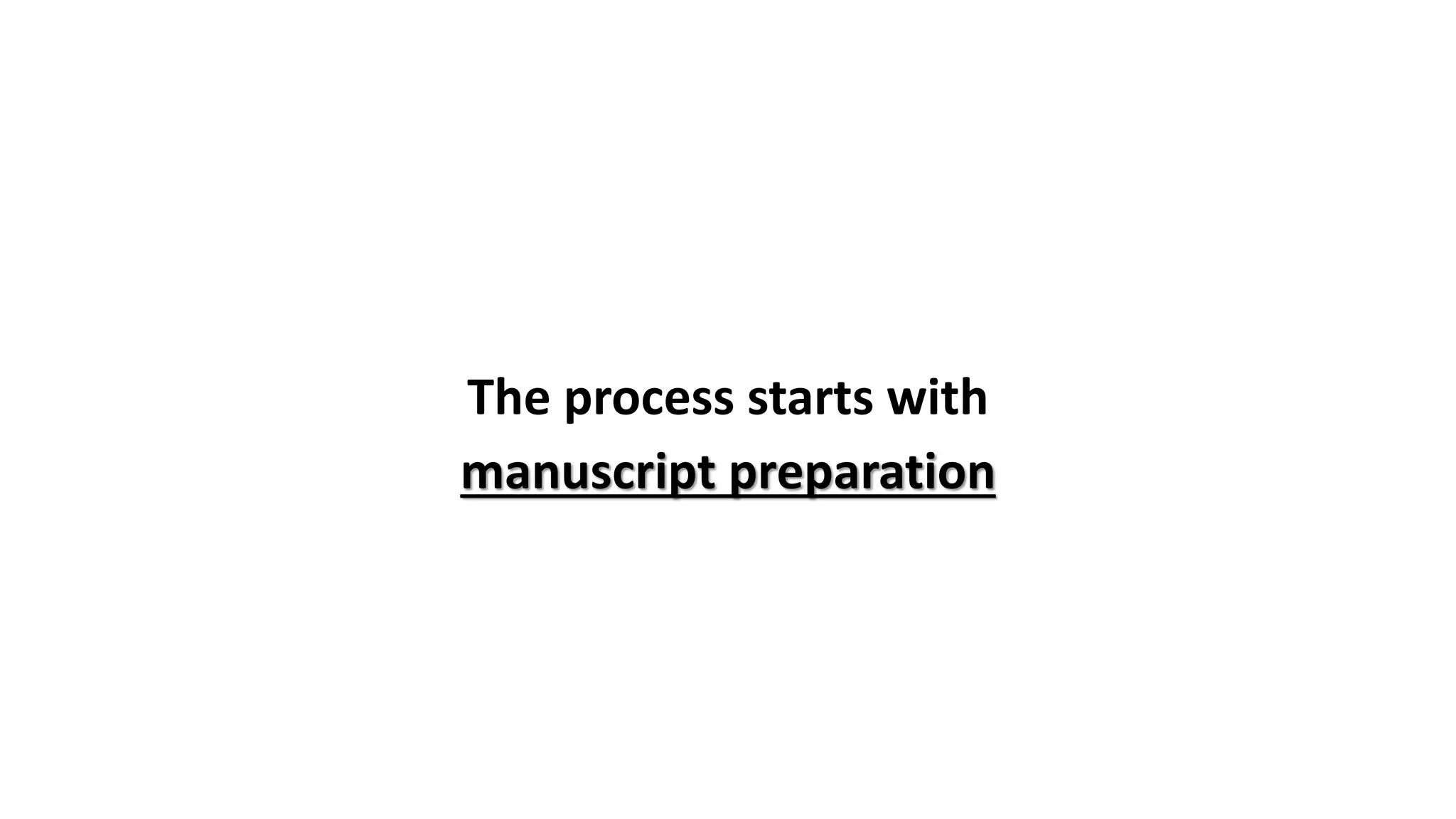This document discusses the process of writing and publishing manuscripts. It covers types of articles, manuscript preparation, finding the right journal, submission process, and peer review. The key steps are preparing the manuscript according to journal guidelines, selecting a suitable journal based on scope and quality, submitting to the journal, and undergoing peer review where reviewers assess scientific quality before the editor makes a decision. Common reasons for rejection include being out of scope, flawed methodology, uninteresting question, or poor presentation.































